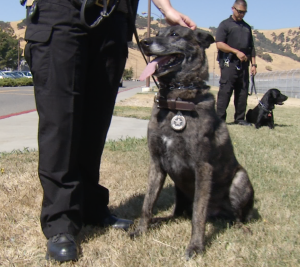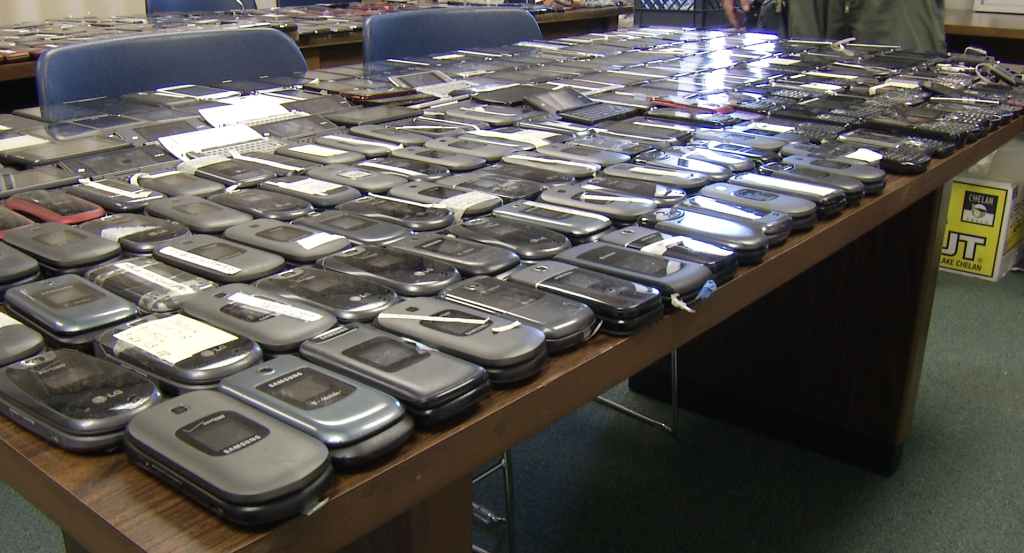CDCR’s Contraband Interdiction Efforts

CDCR oversees, manages, and is responsible for the safe and secure housing of incarcerated individuals within its institutions. The detection and interdiction of contraband, including but not limited to controlled substances, weapons, and cell phones, into our state institutions is critical to disrupting the criminal enterprises that threaten the safety and security of the institutions and the public.
CDCR strongly believes a multilayered approach is the most effective way to reduce contraband activity. This approach includes:
- providing substance use disorder treatment,
- heightened physical security,
- dismantling drug distribution systems,
- disrupting gang activity, and
- closing avenues of entry for contraband.
Interdiction Efforts
CDCR has employed various drug and contraband detection and interdiction efforts, including the following:
- baggage and parcel X-Ray scanners,
- low-dose full body X-Ray scanners,
- walk-through metal detectors,
- hand-held metal detectors,
- ferromagnetic detectors,
- audio and video surveillance systems,
- portable security camera systems,
- cell phone forensic technology,
- K-9 teams (cross trained to detect drugs, cellular phones, and smart devices), and
- cell phone interruption and detection technology (Managed Access System).
Details on these systems as well as results of recent efforts can be found below.

All persons who enter institutional grounds, are subject to a search of their person, private property, and vehicles for contraband and illegal drugs before entering. While on institution grounds and facilities, individuals could be subject to further search with the use of contraband and/or metal detection equipment and/or electronic drug detectors. Protocols for processing of visitors can be viewed here.
CDCR has also installed high definition cameras in areas incarcerated persons have access to in 9 institutions, allowing facilities to monitor and document activities and movements. Fixed cameras are actively being installed at 12 additional prisons.
In January 2020, CDCR began the Integrated Substance Use Disorder Treatment (ISUDT) Program. Although the implementation of ISUDT occurred at nearly the same time as the COVID-19 pandemic, a detailed analysis indicates ISUDT services were the leading factor of a change in SUD-related health outcomes. An analysis of CDCR overdose patterns indicates that overdoses began to decline before the pandemic and continued to decline even as COVID-19 restrictions eased and programming resumed at near-normal levels. A comparison of CDCR residents who received medical assisted treatment (MAT) versus those who were on the MAT evaluation waitlists between January 2020 and March 2021, showed that the overdose hospitalization rate related to opiates was 48 percent lower for those prescribed MAT compared to those who were on the MAT evaluation waitlist.
During the same period of time that movement into the institutions was restricted, including in-person visiting for the incarcerated population due to the COVID-19 pandemic, CDCR experienced a significant increase in contraband discoveries as a result of unmanned aerial vehicle (drone) sightings, mail and package screening, and contraband found “dropped” on or near institution grounds. In 2019, prior to COVID-19, there were a total of 48 drone sightings/discoveries; in 2020, the number decreased to 25.
At the peak of the pandemic, 2021, CDCR recorded a total of 138 drone sightings/discoveries, and as of December 9, 2022, there have been 245 drone sightings/discoveries. In response to the increase in drone sightings and discoveries, CDCR has begun a proof-of-concept testing of drone detection solutions at select sites and will continue to evaluate options for successfully interdicting contraband introduced via these other pathways.
CDCR utilizes specially trained K-9 teams (a K-9 officer and service dog) at every institution as part of its interdiction efforts. The K-9’s are trained to search out and detect contraband such as marijuana, cocaine, heroin, methamphetamine, tobacco and cell phones.
These teams consist of a very select group of handlers and K-9s who each had to complete rigorous training with the Department’s K-9 Academy. They report directly to the investigative services unit within the institution as well as provide mutual aid to other institutions.
The Teams typically perform random or targeted searches at their assigned institution, search operations with other CDCR Divisions or law enforcement agencies, or participate in narcotic/contraband detection training exercises. The teams also provide assistance to CDCR’s Division of Adult Parole Operations and the Office of Correctional Safety, as well as local law enforcement agencies by conducting searches of suspected drug houses during search warrant operations.
The above efforts provide a good foundation for preventing contraband from entering the institutions. CDCR is continuing to evaluate ways to improve consistent statewide application of these detection and intervention systems.
Applying the above referenced contraband interdiction and detection strategies, coupled with departmental search policies, CDCR has recorded the discovery of drugs and contraband depicted in Table 1 and Table 1.5 below.
Table 1: January 01, 2019 – June 30, 2022 Contraband Discovered in Institutions from Major Drug Discoveries
| Type of Contraband | 2019 | 2020 | 2021 | 2022 |
|---|---|---|---|---|
| Cellular Telephones | 10,494 | 9,209 | 8,452 | 3,490 |
| Heroin (lbs.) | 31.5 | 22.6 | 30.2 | 13.3 |
| Marijuana (lbs.) | 55.0 | 64.7 | 128.7 | 49.4 |
| Methamphetamines (lbs.) | 37.6 | 49.3 | 84.3 | 39.4 |
| Tobacco (lbs.) | 325.0 | 421.5 | 160.9 | 80.5 |
Table 1.5: January 01, 2019 – June 30, 2022 Contraband Discovered in Institutions from K9 Search Discoveries Log
| Type of Contraband | 2019 | 2020 | 2021 | 2022 |
|---|---|---|---|---|
| Cellular Telephones | 2,015 | 1,743 | 1,610 | 862 |
| Heroin (lbs.) | 5.6 | 4.4 | 2.4 | 3 |
| Marijuana (lbs.) | 17.6 | 35.6 | 17.8 | 15.4 |
| Methamphetamines (lbs.) | 13.5 | 10.6 | 10.9 | 7.5 |
| Tobacco (lbs.) | 147.5 | 114.4 | 92.0 | 95.3 |
During the height of the COVID-19 pandemic in 2020 and 2021, CDCR took many steps to reduce the spread of virus inside the institution environment. While essential services such as food deliveries and construction projects continued, most non-essential movement into the institutions was suspended for several months at a time during 2020 and 2021, in which personal interaction with the incarcerated population, such as in-person visiting and volunteering, was significantly limited.
These efforts may have resulted in a significant reduction both in the introduction of contraband, as illustrated in the reduced number of contraband discoveries (Table 1 and Table 1.5), as well as the number of arrests for persons attempting to introduce contraband particularly from visitors, (Table 2) and the decrease in overdose related deaths (Table 3) beginning in 2020.
Table 2: Number of Persons Arrested for Attempting to Introduce Drugs, Alcohol, or Contraband – By Fiscal Year
| Fiscal Year | 2018-19 | 2019-20 | 2020-21 | 2021-22 |
|---|---|---|---|---|
| Staff | 10 | 5 | 5 | 6 |
| Visitors | 286 | 186 | 15 | 64 |
| Non-Visitors | 56 | 47 | 44 | 46 |
| Totals | 352 | 238 | 64 | 116 |
Table 3: Inmate Deaths in Institutions from Overdose from January 01, 2016 – December 31, 2021
| Year | Overdoses Resulting In Death |
|---|---|
| 2016 | 28 |
| 2017 | 39 |
| 2018 | 61 |
| 2019 | 63 |
| 2020 | 23 |
| 2021 | 22 |
| Total | 236 |